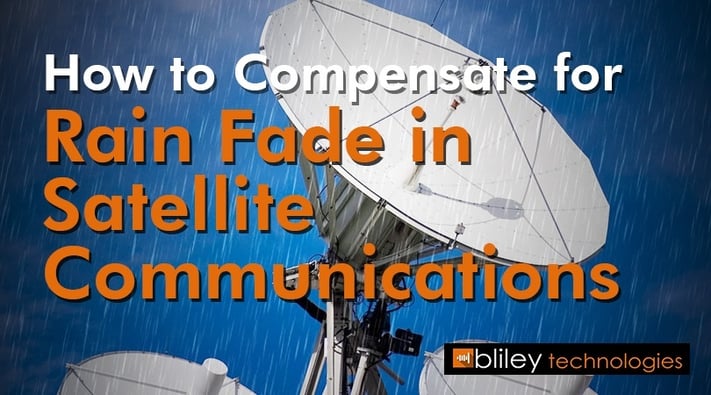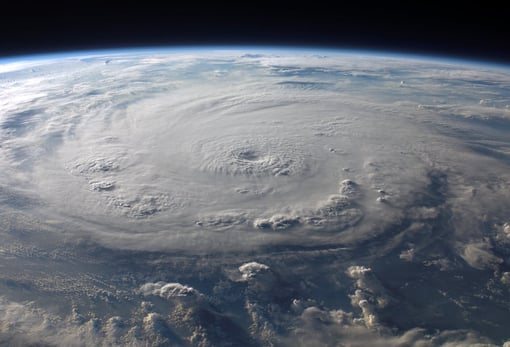
Hurricane season 2017 has been one for the books. This year, North America has experienced some of the biggest and strongest hurricanes EVER in recorded history. Harvey, Irma, and Maria struck back, to back, to back, causing some of the worst destruction the world has ever seen. One thing many of us probably look over during a hurricane is its impact on satellite communications. Environmental factors, such as precipitation from hurricanes, can lead to a challenging phenomenon known as rain fade.

As more and more constellations go online, reliable communication between satellites and receivers on the ground will become ever more important. Rain fade can impair signal transmission and reception, and cause temporary degradation in radio frequency communications.
Lets explore rain fade and the different methods RF engineers can use to compensate for this form of atmospheric interference.
The Rain Fade Phenomenon
The term “rain fade” applies to how atmospheric conditions such as rain, sleet, and snow can absorb microwave-range signals in both satellite and terrestrial point-to-point communications, and contribute to path-loss. Electrical storms and major weather events like hurricanes can also cause significant interference in the same way. The result of this absorption is a loss of signal quality and even a drop in service (for example, a satellite TV signal going offline). Rain fade can be caused by precipitation at either the uplink or downlink sites, but even bad weather which is far away can still contribute to signal degradation if it occurs in the transmission path of the signal. Rain fade is also referred to as rain attenuation.
Frequencies above 11 GHz are more vulnerable to rain fade than lower frequencies, with those in the Ku and particularly Ka bands being the most susceptible.
Combat Rain Fade by Increasing Sun Fade Transmission Power (and more)
There are several different methods for rain fade compensation. One of the simpler approaches involves boosting the transmission power to compensate for the loss in signal strength. This approach is called Uplink Power Control (UPC). Modern UPC systems can monitor transmissions and detect when rain fade is interfering with signal strength, and adjust power levels automatically to compensate. This is a simple and effective way to mitigate the effects of inclement weather on a radio signal, but it is not always suitable if there is limited power availability.

Another simple approach to overcoming rain fade is site diversity. This method calls for the satellite to connect to two or more surface-based stations at the same time, rather than just one. If precipitation is interfering with with the signal where one of the antennas is located, the signal is still being sent to other stations unaffected by these atmospheric conditions. In addition to site diversity, using receiving antennas which are larger than normal atmospheric conditions require can reduce the amount of signal degradation caused by rain fade.
A more sophisticated method to dealing with rain fade in satellite communications is adaptive coding and modulation (ACM). Using this technique, the modulation of a link between a satellite and antenna can be automatically lowered to compensate for interference caused by atmospheric interference. When the weather improves, ACM technology will also raise the modulation back up to full capacity. Using ACM allows for maximum throughput in good weather, while still maintaining communications when rain fade occurs.
An Increasing Problem?
As you can see, there are multiple, proven techniques for rain fade compensation, and the right technique will depend on the unique circumstances and needs of each SATCOM system. But the fact remains that the lower bands in the spectrum are becoming congested, and that leaves nowhere to go but up into the higher frequencies, where rain fade compensation becomes more challenging.
As more Ka-band systems go online in the future, it is likely that rain fade will become an increasing issue, and in the wake of major hurricanes in the US and Caribbean, it makes sense for RF engineers to take a proactive approach to the challenges of harsh weather, not only by protecting physical RF infrastructure, but the signals they transmit and receive as well.
Learn more about our SATCOM solutions here and discover why we’re one of the most trusted names in the RF industry.





